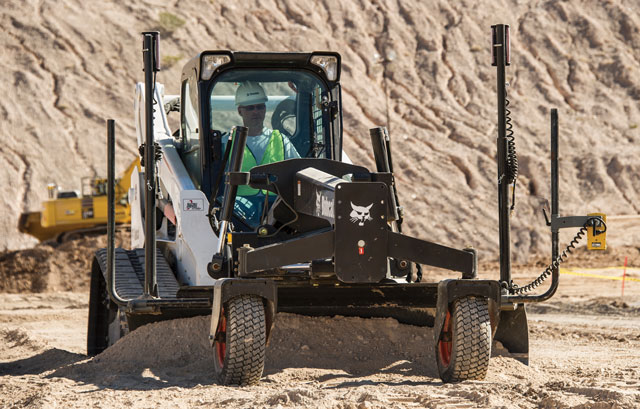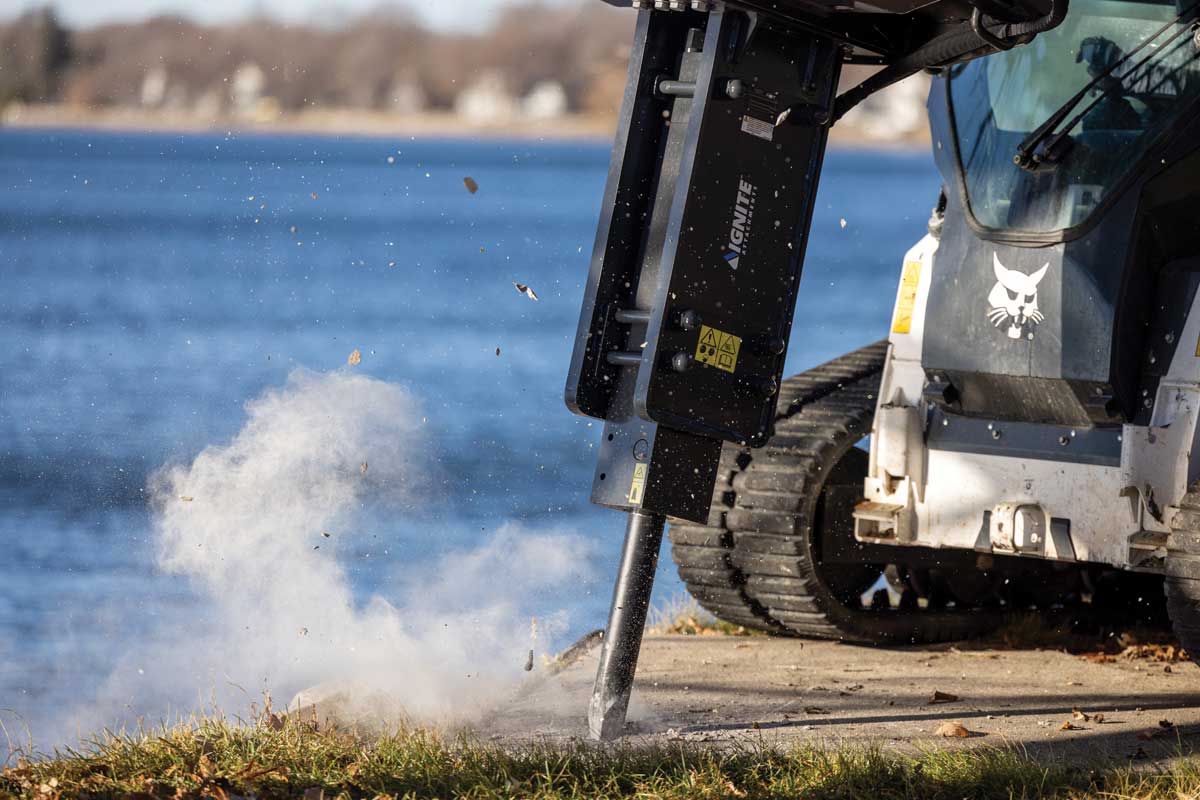On the Level: Explaining the Various Grade Control Technologies for Skid Steers and Track Loaders
Adding machine control helps turn compact machines into highly productive and efficient grading machines, achieving 1/4-in. accuracy and ensuring much less material is needed during site prep. They are also easier to operate, burn less fuel and require less experienced operators than traditional dozers and motor graders. On top of that, older machines and attachments can easily be retrofitted with new machine control systems. This means contractors don’t have to spend more money upgrading their heavy equipment to get the most out of their grading attachments. For these reasons, it’s easy to see why there’s been triple-digit growth in this market over the last several years. Let’s take a closer look at machine control options for skid steers and compact track loaders.
Getting Started with 2D
2D machine control is generally the simplest way to get started with machine control, including on compact track loaders and skid steers. This technology is ideal for leveling parking lots, building pads or sporting fields where everything runs on the same slope. 2D grade control systems are guided by a rotating laser or sonic tracing. 2D systems can use a single or dual grade rotating laser and laser receiver to control the lift and tilt of the grading attachment on compact equipment. 2D grade control systems can also use ultra-sonic signals to maintain a set distance or elevation from an object, a design surface or the ground. This is useful if operators need to tie into an existing feature, such as a curb when they are grading a parking lot.
While prices vary across manufacturers, 2D grade control systems, which include lasers, a control box, receivers and software, can run from $12,000 to $15,000. When you consider the relatively low entry point for 2D machine control, it doesn’t take long for the technology to pay for itself, often over a single season or a single year of use. In addition to increased grading productivity and accuracy from machine control, contractors experience significant savings in material yield. Because a laser can provide accuracy of 1/16th of an inch, a contractor laying subgrade for a 40,000-sq-ft slab for a warehouse could save thousands of dollars in material costs on a single job.
Achieve Millimeter Accuracy with 3D
3D machine control systems are a step up in complexity from 2D systems, particularly in terms of the sources that are used for elevation references and corrections. Additional infrastructure is also needed to run these systems, including a total station or base station and a 3D design of the project. 3D machine control can be guided by single GNSS, total station/base station or dual GNSS. Universal total station is generally the highest price point and provides millimeter-level accuracy by measuring the exact position, very accurate cross slope and the heading of the grading attachment. The advantage of 3D is that contractors can take on more complex designs, including building pads, roads and fine grading applications using this more precise technology.
While costs vary, options for a total station, base station or full GNSS 3D system can run between $50,000 and $80,000 with the all the related components and infrastructure needed. These machine control options also require 3D models, which are loaded into the control boxes inside the cab. 3D models are much easier to create today thanks to programs like SketchUp, which allow even novice users to take PDF plans from builders and turn them into 3D models. Engineers are also creating higher-quality designs today, so part of the work is already complete, and companies that specialize in building models can produce basic 3D designs needed specifically for machine control systems often in the $500 to $1,500 range.
With 3D machine control options on compact machines, material yield savings is still the fastest way to gain a full return on the investment. Many contractors report thousands of dollars saved in the first few months of using 3D machine control. In addition to using less material on each project, there is also significant savings in eliminating surveying and staking costs across projects. In addition, many contractors talk about 3D machine control’s ability to make operators much more autonomous on the jobsite.

Whatever option is selected, look for machine control on compact equipment to help operators get to grade faster, lower material usage and cut surveying and staking costs significantly.
While picking out the right machine control system can be a challenge, remember that it’s easy to take an incremental approach to adoption that fits the budget and goals for acquiring new work. 2D machine control options are a great entry point for contractors wanting to take on more surface prep work or fine grading work for footpaths, greens for golf courses, car parks, subdivisions, sports fields or large building pads. Those with 2D machine control on compact machines can also rent 3D upgrade kits for specific projects very reasonably, which allows contractors to try before you buy. Whatever option is selected, look for machine control on compact equipment to help operators get to grade faster, lower material usage and cut surveying and staking costs significantly.





